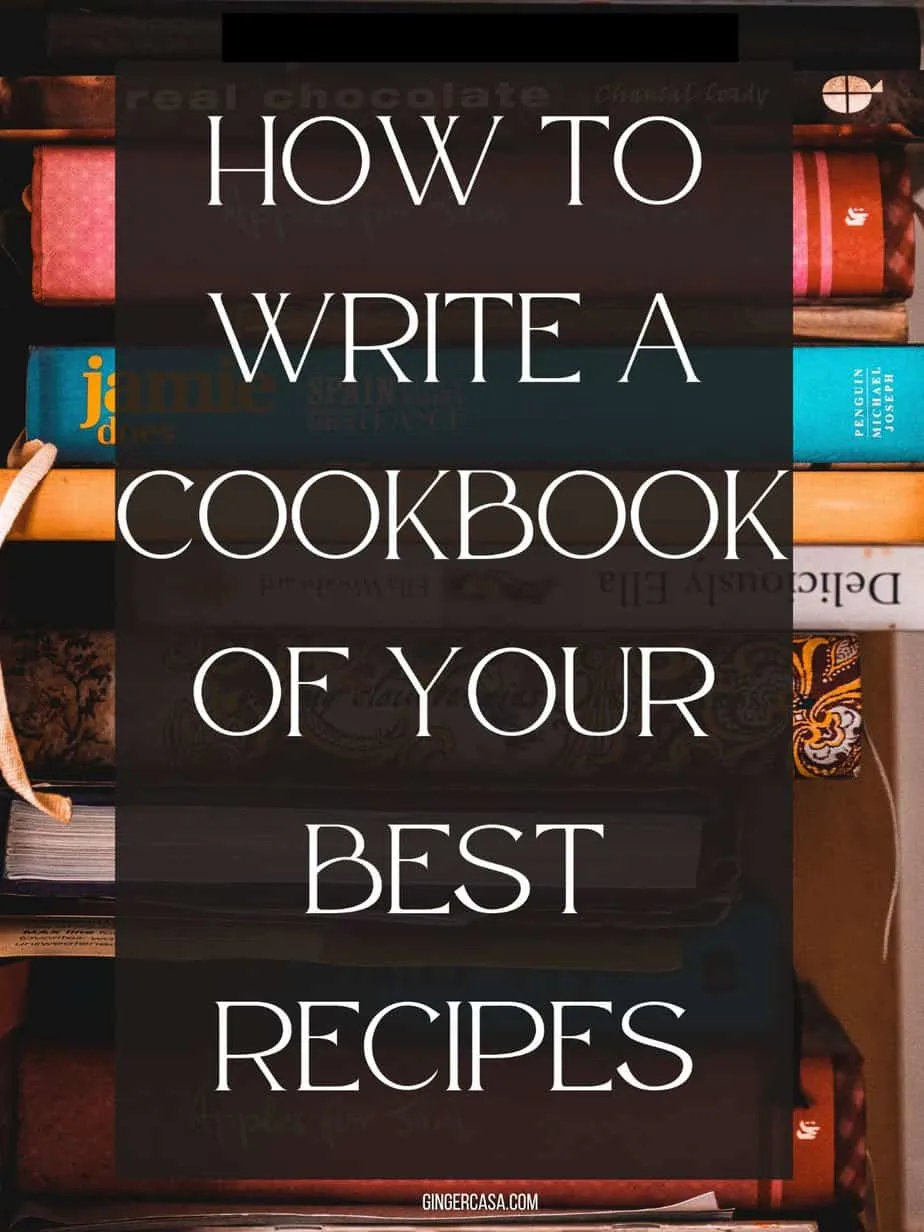If you’re passionate about cooking and aspire to write your own cookbook, there’s no need to worry. You are not alone in this process. If you want help with writing, learn how to write a book for Amazon and consider all the different opportunities. Whether you want to sell a million copies of your cookbook to your fans, or just want to make a cookbook to share with friends or family, I will give you some of the key tips that will help you turn this dream into a reality!

So you know you are a great home cook and want to write your first cookbook. You have lots of great food recipes and you have a vast collection of your favorite recipes that you have created. You likely have a lot of questions about the best way to write your own book of recipes. Here are a few things to think about as you flesh out your cookbook idea and get to work! The entire process can take a long time, but the important thing to remember is that you are a great cook and you will do great things if you are willing to put in the time and work.
Define your Concept and your Target Audience
The most important part of writing a cookbook is deciding on your culinary niche and audience. It helps to focus your efforts to avoid misunderstanding concepts. Different topics attract distinct groups of readers. Consider your audience and what they will not be able to pass up if they saw your type of cookbook in the store.
The next crucial step is to select a particular niche and focus on topics that ignite your passion or align with your profound expertise. It does not mean you must limit your creative vision in some areas. You can experiment, create unique recipes, and explore culinary traditions. If you have two big types of recipes you would like to explore, pick the one you have the most content for and save the other type for your next cookbook!
To better understand the concept, let me offer a few simple examples for illustration. The first thing that comes to mind is the vegan topic, where you can concentrate on recipes that exclude animal products. Alternatively, you could explore a baking book focusing on cakes and other delicious baking recipes. It could also be something about the most famous international dishes or a book with a leisurely everyday breakfast. Anything goes with cookbooks, but good recipes and hard work are both key components to making a good cookbook.
Depending on the topic of your book, it may change your readership. You can also integrate a niche into different audiences, making your work more narrowly focused. For instance, demographic factors such as family size, age or culinary skill level could be engaged differently.

Recipe Development
The next part in preparation is collecting and organizing materials. If you are thinking about writing a recipe book, there is a good chance that sure you have many recipes and ideas for the realization already.
It is essential to know what type of person you are: do you prefer physical printed recipes or are you a digital type? In the first case, you can use binders with categorized sections to effectively organize them or use cards to save and sort them into categories. In the second case, you can choose from various apps and software solutions to cater to your needs. Evernote or OneNote is good for creating notes that can include text, images, and voice notes. My Recipe Box, Recipe Keeper, Just the Recipe, and others allow you to collect, organize, and categorize recipes. Also, specialized cookbook software like CreateMyCookbook is designed for compiling recipes into book format. So, use all the tools you can to form your recipes into a logical structure, and imagine what section will be in your future book.
Format and Style
In this section, we go from the preparation part to the writing part. Start with a basic format for recipes: ingredients and step-by-step instructions. The first one should be formed in a separate list before every recipe. I also want to highlight the importance of using standardized measurements, such as cups, tablespoons, grams, etc.
Further, present, clear instructions for preparing the recipe are essential. Start with the initial steps and progress in a logical order. In addition, if it matches your concept, include alternative ingredients for dietary preferences or allergies.
Incorporating food photography into your book is essential for capturing your readers’ attention and making it more user-friendly. Great photos provide visual cues that help readers understand the cooking process and the desired outcome. They can make complex techniques or presentation steps more approachable. If you are not a photographer, it is a good idea to hire one. To enhance your cookbook even further, consider hiring a food stylist or even creative teams to help you take the best pictures possible for your new cookbook.
Recipe Descriptions
Words and descriptions can work wonders and writing skills are very important! Describe the visual view of the dish. You can add the mention of colors, shapes, and presentation. Use vivid words to convey the flavors. Is it zesty, sweet, savory, or spicy? Try to draw attention to specific ingredients by describing their characteristics or origins.
If you want to connect with readers, you can begin with an introduction at the beginning of your book and before every section or recipe. Try to use a vivid picture to describe what readers can expect from the recipes in the section. If there’s something special about the recipes in this section—an exotic ingredient, a secret family recipe, or an innovative cooking technique—mention it to build anticipation.

Organizational Structures
You have the flexibility to organize your book in various ways. The classic approach involves structuring it by meal types, such as breakfast, lunch, and dinner, or categorizing recipes into appetizers, mains, and desserts. If this approach doesn’t fit your concept, consider organizing your book by cooking methods or style of cooking, like grilling or baking. Alternatively, you could opt for organization by occasion, differentiating between holiday and everyday dishes.
As mentioned earlier, you need to consider who your readers are and what they’re looking for. If you’re catering to busy families, a structure based on meal type may be more practical. Whatever structure you choose, ensure it’s user-friendly and facilitates easy navigation, allowing readers to find what they’re searching for quickly.
Publishing Your Cookbook
After your first draft is done, you can rest, but also plan to spend time thinking about a possible book tour, hiring the help of an agent, what the selling price should be, the costs of self-publishing, how much money you have to work with, hiring a professional editor to look over your cookbook, reaching out to a publishing house for a book deal, and even those who would be willing to help you with recipe testing, to make sure there are no recipe flops in your book.
During the publishing process you are bound to make numerous tweaks and changes to your original draft. This is a completely normal part of writing a cookbook of your favorite recipes, but there are a few things you may want to get into place before you get to this stage. If you haven’t already upgraded your computer and looked into the best internet near me, this is your sign to do it. Not only will you need to upload your book on a variety of platforms, but you’ll also need to edit it and format it. Having a reliable laptop and internet connection will make this final stage much less tedious and actually quite enjoyable. You will thank yourself to making these preparations sooner rather than later as it will mean fewer delays waiting for your book to be signed off and officially published to the online world!
Remember, all of the cookbook authors were once a first-time author. Good luck on this brave endeavor, it is a great idea to add to the favorite cookbooks in someone’s collection!
